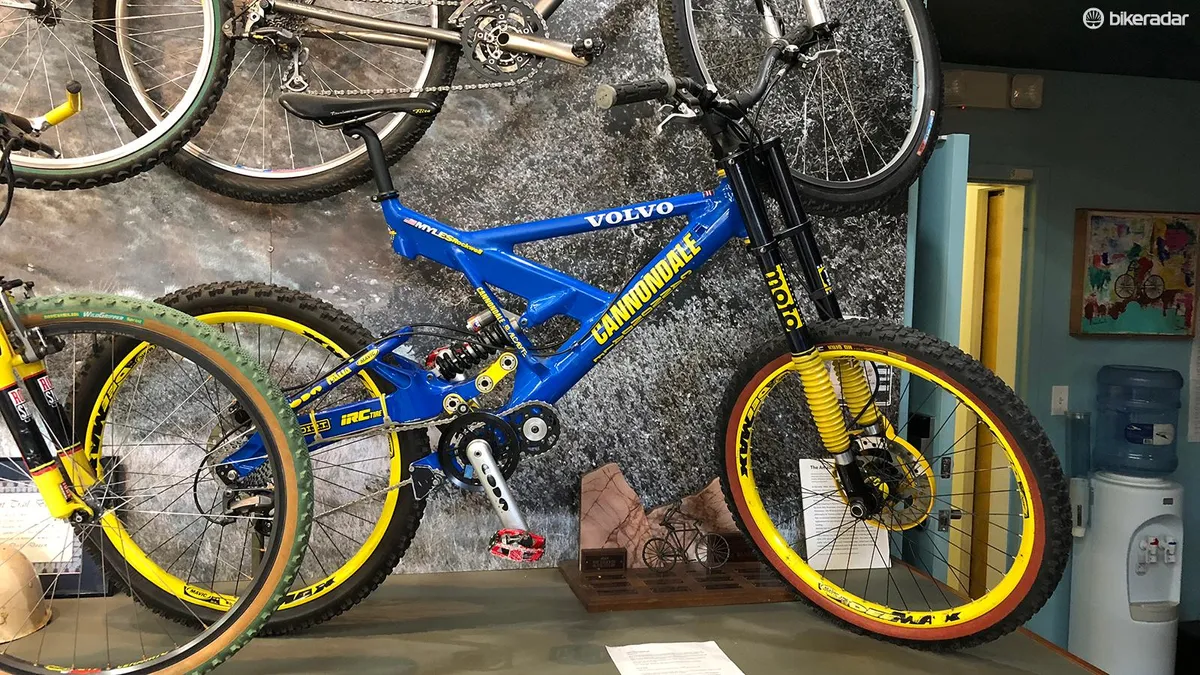Intense Factory Racing and J-Tech have developed 3D-printed brake guards to protect brake rotors and calipers in wet weather, with the team's testing showing they offer an improvement in performance and predictability.
Brakes are one of the most important components on your bike, so it’s crucial they’re powerful, predictable and consistent. But wet and mucky condition can impact their performance: Water can cool your rotors, which causes inconsistent braking, and dirt can reduce friction.
So brake covers like these can help downhill racers go faster by offering them more consistent braking performance – a marginal gain, but with downhill racers separated by such fractions of a second, mods like these can make a difference in terms of race results.
Isn't this a throwback?

Brake covers are nothing new – the iconic Cannondale Fulcrum was partly defined by its brake covers, but they’ve been largely forgotten about since. So why bring them back in 2025?
“Our brief from the Intense Factory Race Team was primarily to keep contaminants off the rotor and caliper,” says Jim Williams of J-Tech.
“We wanted to get rid of the reduction in braking performance after riding through a big puddle, or an extended section of trail where it is cold or wet, and you’ve been off the brakes for a while. Rotor guards reduce the chance of finding yourself in this situation.”
The guards were developed for Joe Breeden, who’s no stranger to wild inventions – just look at his energy-saving handlebar end caps, and a custom shock lockout for a Öhlins coil shock, both of which were made by J-Tech.


“To make the rotor covers, we 3-scanned the areas concerned, designed and prototyped parts in-house on our own machines and tested with the team,” says Williams. “We had to outsource production of the front covers as we just couldn't fit them in our printers due to the size.”
The covers weigh around 100g each. While this slight increase in unsprung mass is a disadvantage to the bike’s suspension performance, the team feels the increased braking performance outweighs this.

The covers surround only part of the rotor. In testing, J-Tech found larger covers would impede wheel removal and could become unstable at high speed, flapping around and distracting the rider.
The front guard fits to the fork via the stanchion guard mounting points found on the EXT Vaia fork used by the IFR team. It’s affixed using top hat spacers and longer bolts, which Williams says creates a precise and secure fit.
On the rear, the J-Tech team settled on a simple zip-tie mount to the seatstay and an interference fit with the sides of the brake caliper for more stability.
Hot topic

The covers also help insulate the braking system, improving performance. “There's a temperature point at which disc brakes work optimally,” explains Williams.
“In wet, muddy conditions, the ambient temperature tends to be lower, and water splashing up can cool the brakes further.” The insulating effect of these covers retains heat, keeping brake temperatures closer to where they would be in dryer conditions.
J-Tech was initially concerned that the insulation effect might be too great at the rear, and subsequently incorporated cooling vents into the rear covers.
However, J-Tech says it hasn’t tested this thoroughly yet. It will soon record temperatures in different conditions and with varying disc rotor sizes, while adjusting the venting. “From here we can work out what the optimum amount of cooling is and if we actually need any at all,” explains Williams.
“It's early days in terms of getting the full benefits from these parts, but team riders already say that keeping water and mud off the brakes makes a huge difference to braking performance in wet conditions,” finishes Williams.
And what about aero?

But are there also aero gains to be had? Much like a wheel, a spinning disc rotor creates turbulence as it spins through the air. Could disc brake covers reduce aerodynamic drag?
Williams says that aero is certainly something that can be explored with further development, but the biggest gain from the covers is consistently powerful brakes in wet/muddy conditions.

These rotor guards are not currently on sale but we will let you know if J-Tech puts them on sale.
